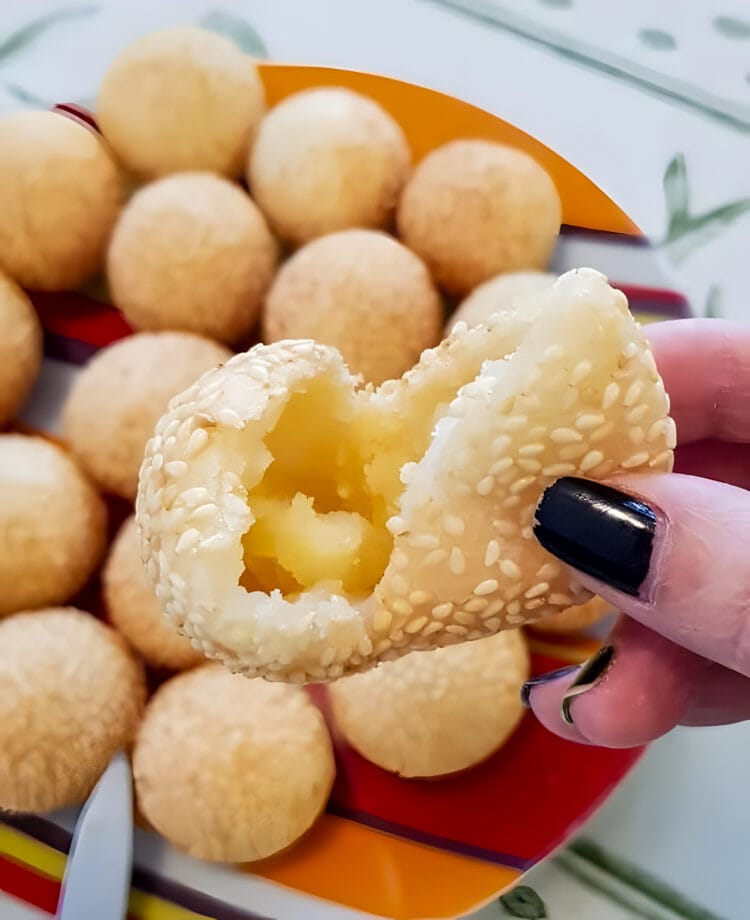If you’re looking for a good rich dessert, something fried and crispy is always welcome. This recipe for sesame balls (Vietnamese bánh cam) will satisfy your snack cravings with a golden and crispy outer dough made from glutinous rice, filled with sweet mung beans and covered with white sesame seeds.
The name bánh cam literally means “orange cake” because these balls simply resemble oranges, not because they contain real oranges. Yes, sorry, once again, no vegetables.
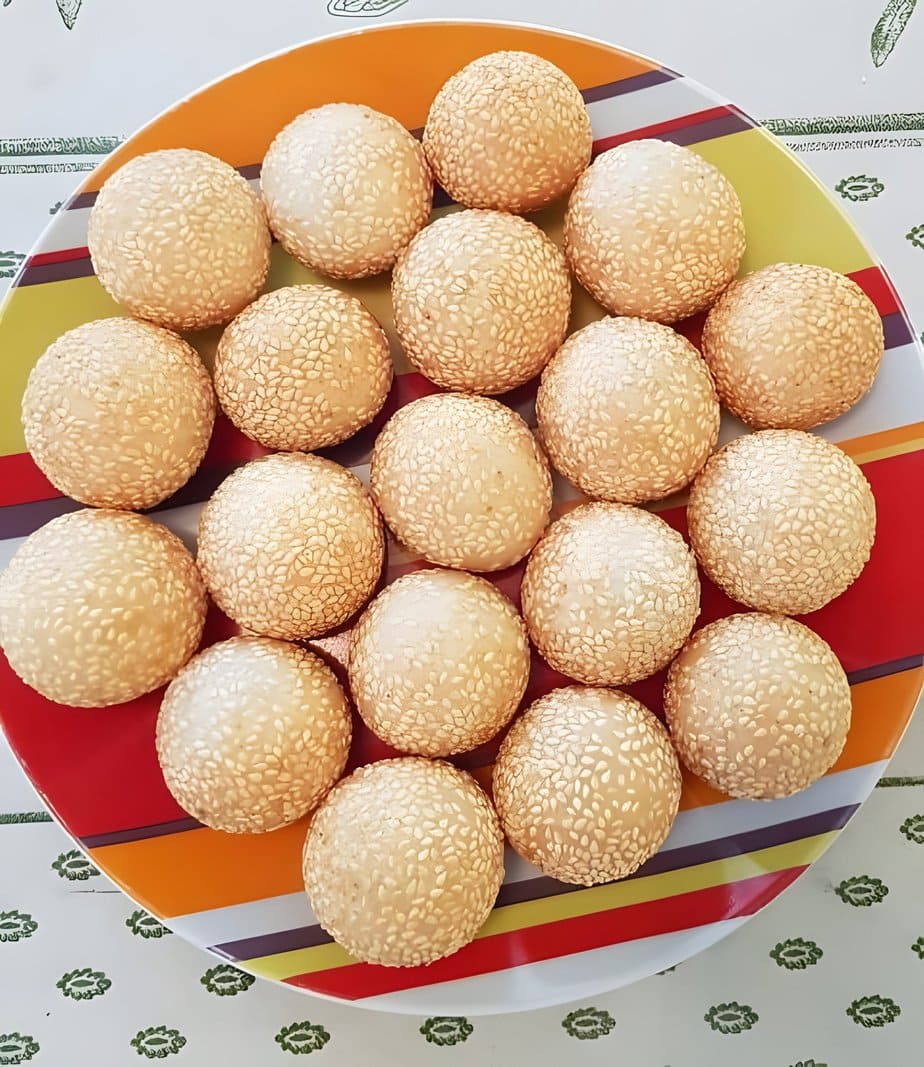
What Do BáNh Cam Taste like?
In Bánh cam reigns a wonderful harmony of flavors: The outer shell is a warm golden brown covered with white sesame seeds. The exterior has a satisfying crunch due to frying. On the other side of this surface is a slightly rubbery or elastic glutinous rice dough and a sweet mung bean ball.
Bánh cam fans can be quite picky about this balance between crunchiness and chewiness.
Vietnamese Origins of BáNh Cam
Although they look very similar, there are differences between Southern bánh cam and Northern bánh cam, just like with spring rolls. However, both styles can be found throughout the country.
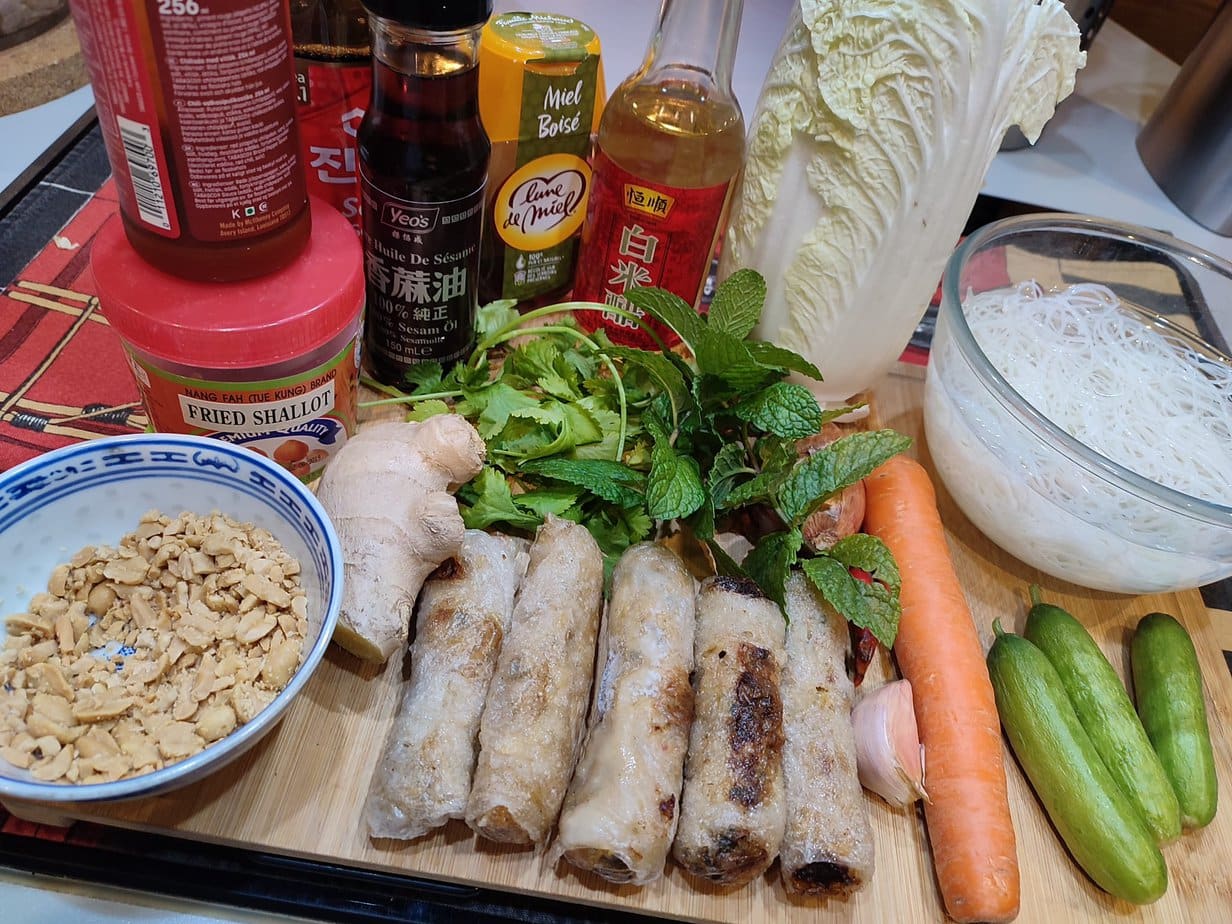
Northern Vietnamese Style – BáNh RáN
Northerners call it bánh ran, or “fried cake”. These are made with jasmine flower essence for a very pleasant aroma.
Another difference in the north is that when they are coated with sugar, the dough is made only with glutinous rice flour and not regular rice flour, sesame seeds, or potatoes. Vietnamese cuisine shows its great diversity here.
Southern Vietnamese Style – BáNh Cam
In this post, we are making the Southern style. There is no flower essence. The most popular flavor for the mung bean filling is with a few drops of vanilla extract.
It’s only in the south that you’ll also find freshly grated coconut in the filling, but this will vary depending on the vendor.
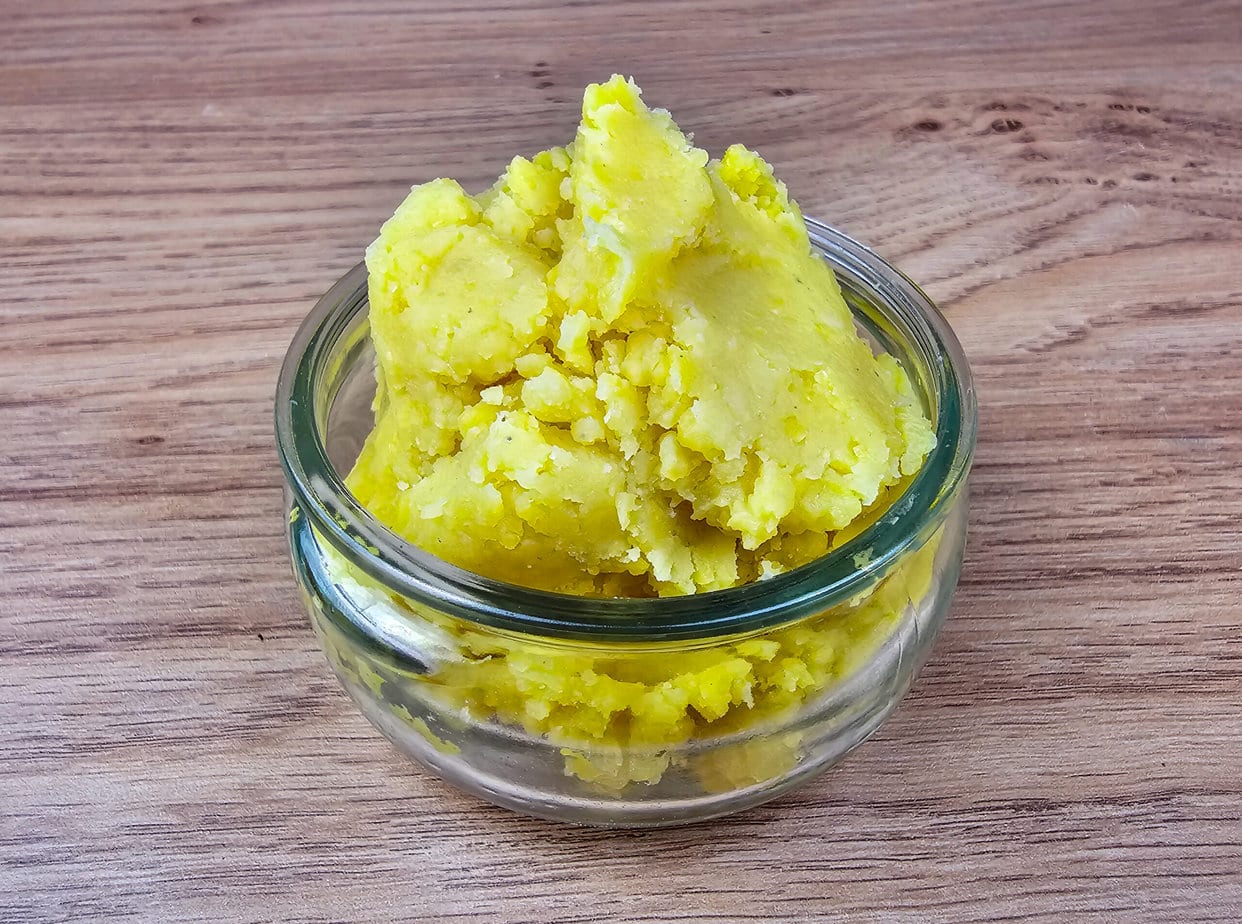
Created by Necessity
In many cases, money determines how things unfold. Many add potatoes to prevent the bánh cam from exploding in the fryer.
As potatoes were scarce (expensive) in Vietnam, sweet potatoes were used instead. This increased the sweetness, allowing the cook to save money by also reducing sugar
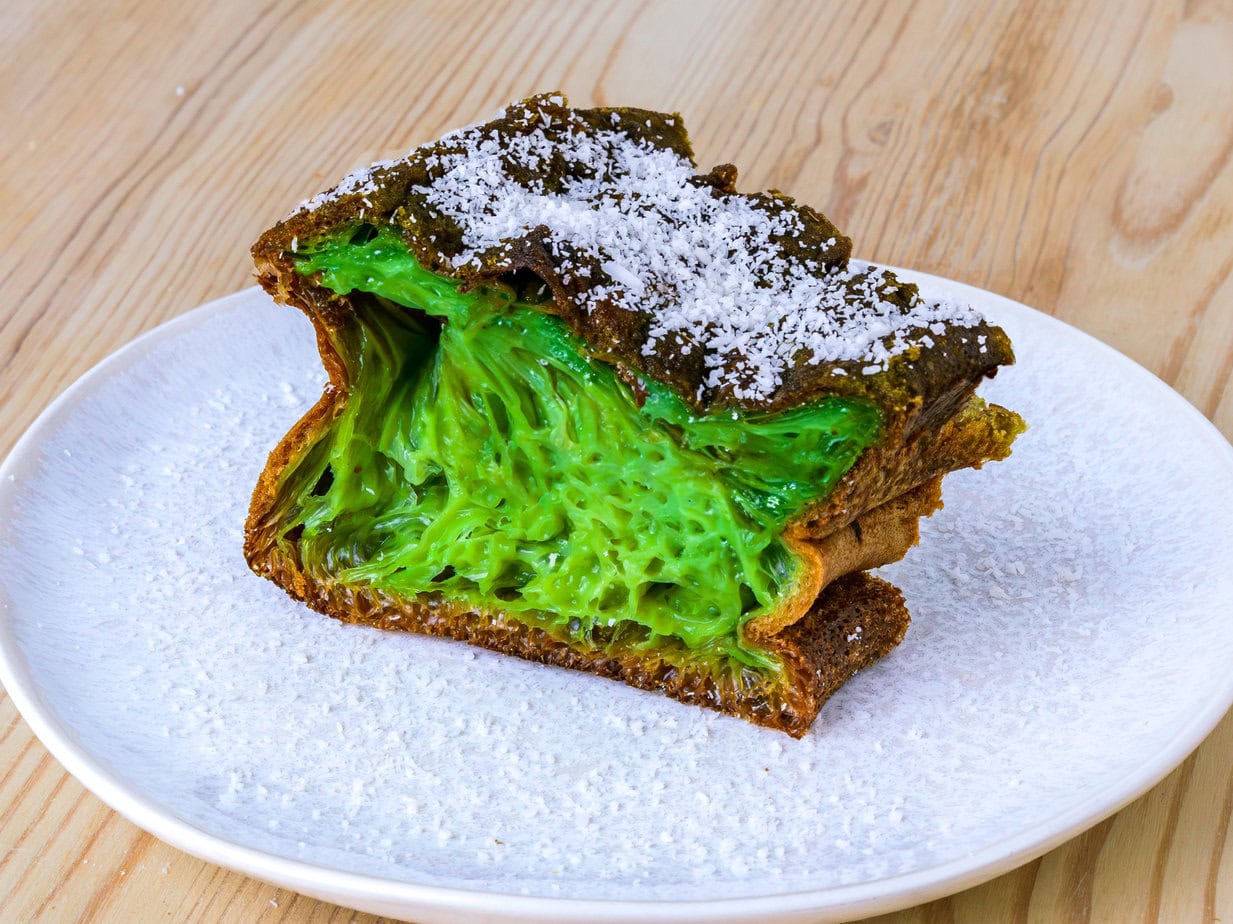
Tips for Successful BáNh Cam
How to Adjust Sugar for BáNh Cam?
Adjusting sugar for the filling is easy, but it can change the texture and color if you adjust too much for the dough.
What are BáNh Cam Made of?
Vietnamese bánh cam is a mix of glutinous rice flour, regular rice flour, and a crispy outer layer of wheat flour with a sweet and sugary mung bean filling similar to mochi.
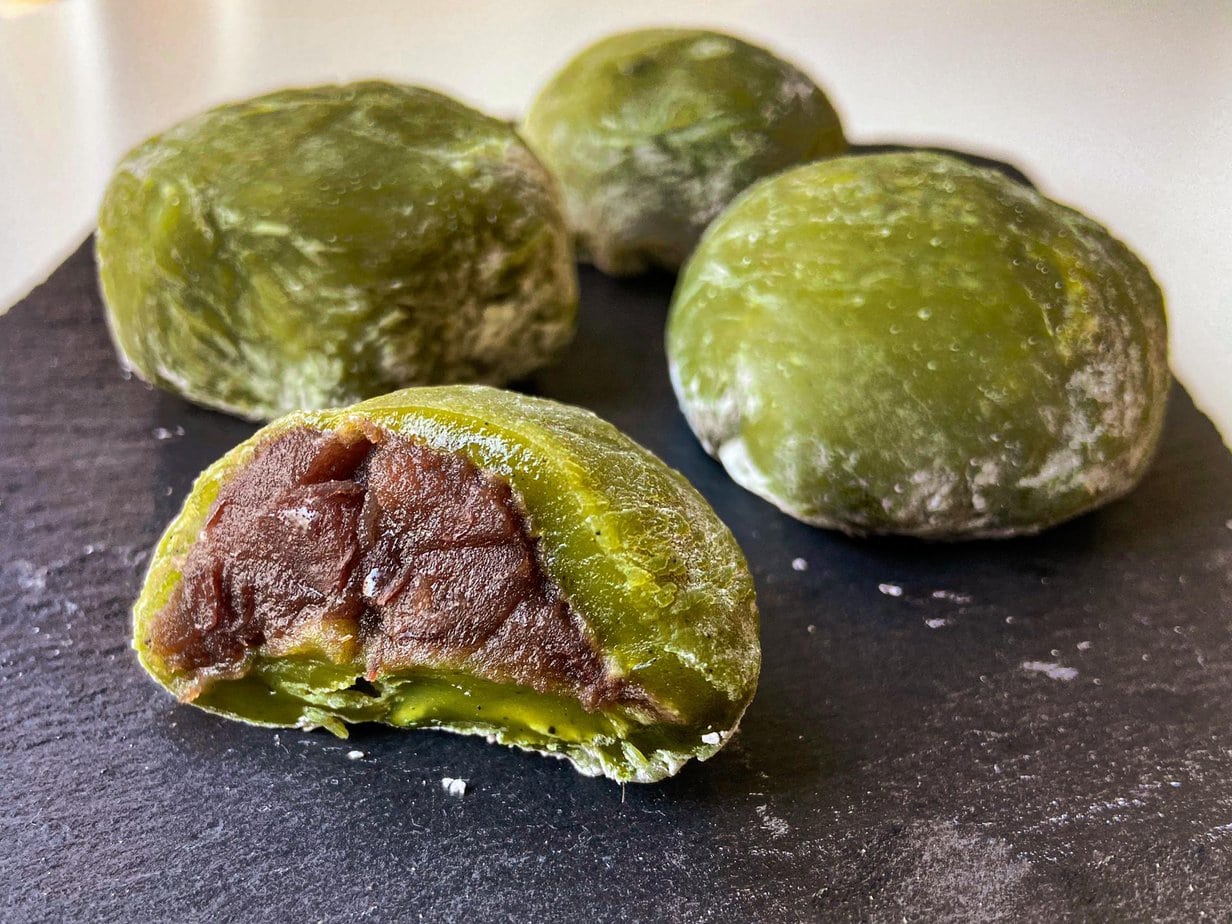
What Do BáNh Cam Taste like?
The sesame balls have a crispy sesame exterior and give you a sweet mung bean flavor when you bite into them
Advance Preparation and Storage
Before rolling and frying, the dough keeps very well in the fridge for a few days. If you don’t eat too many at once, it’s best to fry fresh batches.
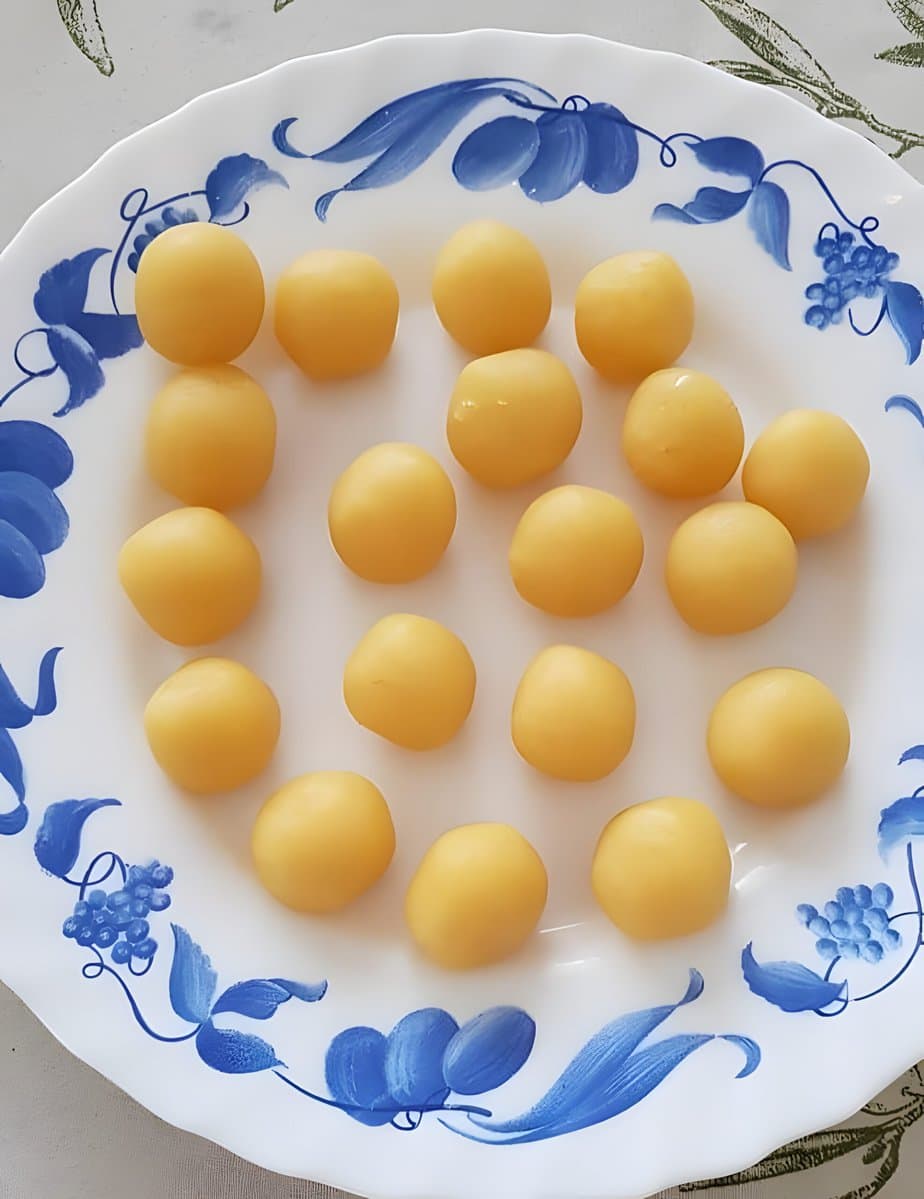
After frying, these sesame balls keep well for a day or two. To reheat them, put them in an oven or fry them again in neutral cooking oil.
Chinese Sesame Balls?
The Chinese version of these sesame balls is very similar. I mostly see them on dim sum carts.
The filling is usually a red bean paste, black bean paste, taro, or lotus seeds.
When you bite into the Chinese sesame ball, you’ll generally find it more crushed and sticky on the inside of the outer shell compared to the Vietnamese version.

Vietnamese Sesame Balls – Bánh Cam
Equipment
- 1 Asian fried food
- 1 steamer basket
Ingredients
Batter
- 300 g of glutinous rice flour
- 2 tablespoons rice flour
- 0.5 teaspoon baking powder
- 100 g of sugar
- 1 tablespoon neutral oil
- 315 ml warm water
Farce
- 120 g mung beans
- 45 g of sugar
- 1 pinch salt optional
- Sesame seeds for garnish
Instructions
FILLING (NHÂN)
- Rinse the mung beans under running water and drain them, as you would for rinsing rice.
- Soak the mung beans: Add enough boiling water to cover 1.5 cm above the level of the mung beans, let them cool and transfer them (still in the water) to the refrigerator overnight. If you want to speed up this process a bit, you can empty the pot after cooling (about two hours, then repeat the operation)
- Cooking: Using a steamer on medium heat is the easiest way to achieve perfect cooking. You can also do it in a rice cooker with a little more water than you would use for making rice, but you’ll lose some texture. The beans are cooked when they are no longer crunchy, softened, and ready to be mashed. This takes about 50 minutes with a steamer.
- Mix the cooked mung beans with sugar and salt. Mash and add water if necessary to obtain a paste similar to thick and slightly dry mashed potatoes.
DOUGH (VỎ)
- Pour half of the water into a large bowl. Add sugar and salt and mix to dissolve.
- Add the remaining ingredients and mix to combine (you can use a food processor if you wish). The dough should be slightly dry and have a modeling clay consistency. Let the dough rest for at least 2 hours, ideally 8 for best results. It will rise slightly and hydrate after resting, making it easier to work with.
FORMING THE BÁNH CAM
- With the filling, form balls
- Flatten a disk of dough and add a ball of mung bean filling. The dough to filling ratio is up to you! Keep in mind that they will slightly puff up during cooking.
- Try not to leave air pockets inside, as the dough will already expand and add air to the center. Close the ball so there are no cracks.
- Gently roll in your hands to form a ball, then roll in a bowl of sesame seeds to coat well. Set aside for frying.
FRYING
- Heat a thick pot with neutral cooking oil to about 130 degrees (max 140) and fry the bánh cam. Make sure not to overcrowd the fryer or pot. This should take about 11 minutes per batch. You may need to move them constantly for even cooking.
Notes
Nutrition
Thanks to Li Maili from the official Facebook group for her recipe
